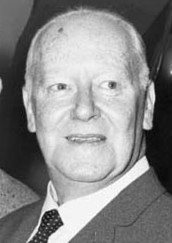Kenneth Slessor facts for kids
Quick facts for kids
Kenneth Slessor
|
|
|---|---|

Kenneth Slessor on 3 January 1949
|
|
| Born | 27 March 1901 Orange, New South Wales, Australia |
| Died | 30 June 1971 (aged 70) North Sydney, New South Wales, Australia |
| Occupation | Poet, journalist |
| Education |
|
| Years active | 1924–1970 |
| Spouses |
|
| Children | Paul Slessor |
Kenneth Adolphe Slessor (27 March 1901 – 30 June 1971) was an important Australian poet and journalist. He also worked as an official war correspondent during World War II. Slessor was one of Australia's top poets. He is known for bringing new, modern ideas into Australian poetry. A special award for poetry, the Kenneth Slessor Prize for Poetry, is named after him.
Contents
Early Life and Education
Kenneth Slessor was born in Orange, New South Wales, Australia. As a young boy, he lived in England for a short time with his parents. His father was a mining engineer.
In 1903, his family moved to Sydney. Kenneth went to Mowbray House School from 1910 to 1914. Later, he attended the Sydney Church of England Grammar School from 1915 to 1918. It was during his school years that he started writing poetry.
His very first poem was called "Goin'". It was about an Australian soldier, known as a digger, who was wounded in Europe. The poem showed the soldier remembering Sydney. This poem was published in The Bulletin magazine in 1917.
After finishing school in 1918, Slessor got excellent marks in English. He then started working as a journalist for Sydney Sun newspaper. By 1919, seven of his poems had already been published. He got married for the first time in 1922.
Career as a Writer and Journalist
Kenneth Slessor worked mostly as a newspaper journalist. He wrote for The Sun for many years. During World War II (1939–1945), he became a war correspondent. This meant he reported on the war from different places. He reported from Australia, Greece, Syria, Libya, Egypt, and New Guinea.
Besides serious news, Slessor also wrote about rugby league football. These articles appeared in a popular magazine called Smith's Weekly.
Most of Slessor's famous poems were written before World War II ended. His poem "Five Bells" is probably his most well-known work. This poem is about Sydney Harbour, time, memories, and the death of his friend Joe Lynch. Lynch was also an artist and worked with Slessor at Smith's Weekly. Another important poem is "Beach Burial," which honors Australian soldiers who died in World War II.
In 1944, Slessor published a major collection of his poems called One Hundred Poems. After this book, he wrote only three more short poems. He decided to focus on his journalism career. He also spent his time supporting other writers and projects that aimed to help Australian poetry grow.
Slessor was a member of The Journalists' Club in Sydney. He served as its Vice-President from 1940 to 1957. Then, he became the President from 1957 to 1965. A painting of Slessor was made by William Pidgeon, who painted many club presidents.
Awards and Recognition
In 1959, Kenneth Slessor was honored for his contributions to literature. He was appointed an Officer of the Order of the British Empire (OBE). This is a special award from the British government.
Many places and works are named after Kenneth Slessor:
- A street in the Canberra suburb of McKellar is named after him.
- Kenneth Slessor Park in Chatswood is also named in his honor. This park features designs inspired by his poem "Five Bells."
- The 1988 musical Darlinghurst Nights is based on his poetry. Slessor himself is a character in the musical.
- The bells mentioned in his poem "Five Bells" are referenced in the 1999 song "You Gotta Love This City" by The Whitlams. This song also talks about a drowning in Sydney Harbour.
- Slessor's poetry has been included in the English reading lists for the Higher School Certificate in New South Wales. Students study his poems for their final exams.
- He has a special plaque dedicated to him on the Sydney Writers Walk at Circular Quay.
- The poem "To Kenneth Slessor" by Peter Skrzynecki is about his friendship with Slessor. This poem was part of the Old/New World poetry book.
Personal Life
Kenneth Slessor had several well-known friends, including Norman Lindsay, Hugh McCrae, and Jack Lindsay.
He married Noëla Beatrice Myer Ewart Glasson in Ashfield, Sydney, on 18 August 1922. Noëla passed away from cancer in 1945.
He married Pauline Wallace in 1951. A year later, his only child, Paul Slessor, was born. His marriage to Pauline ended in 1961.
Kenneth Slessor died suddenly from a heart attack on 30 June 1971. He passed away at the Mater Misericordiae Hospital in North Sydney. His ashes are buried at Rookwood Cemetery.

